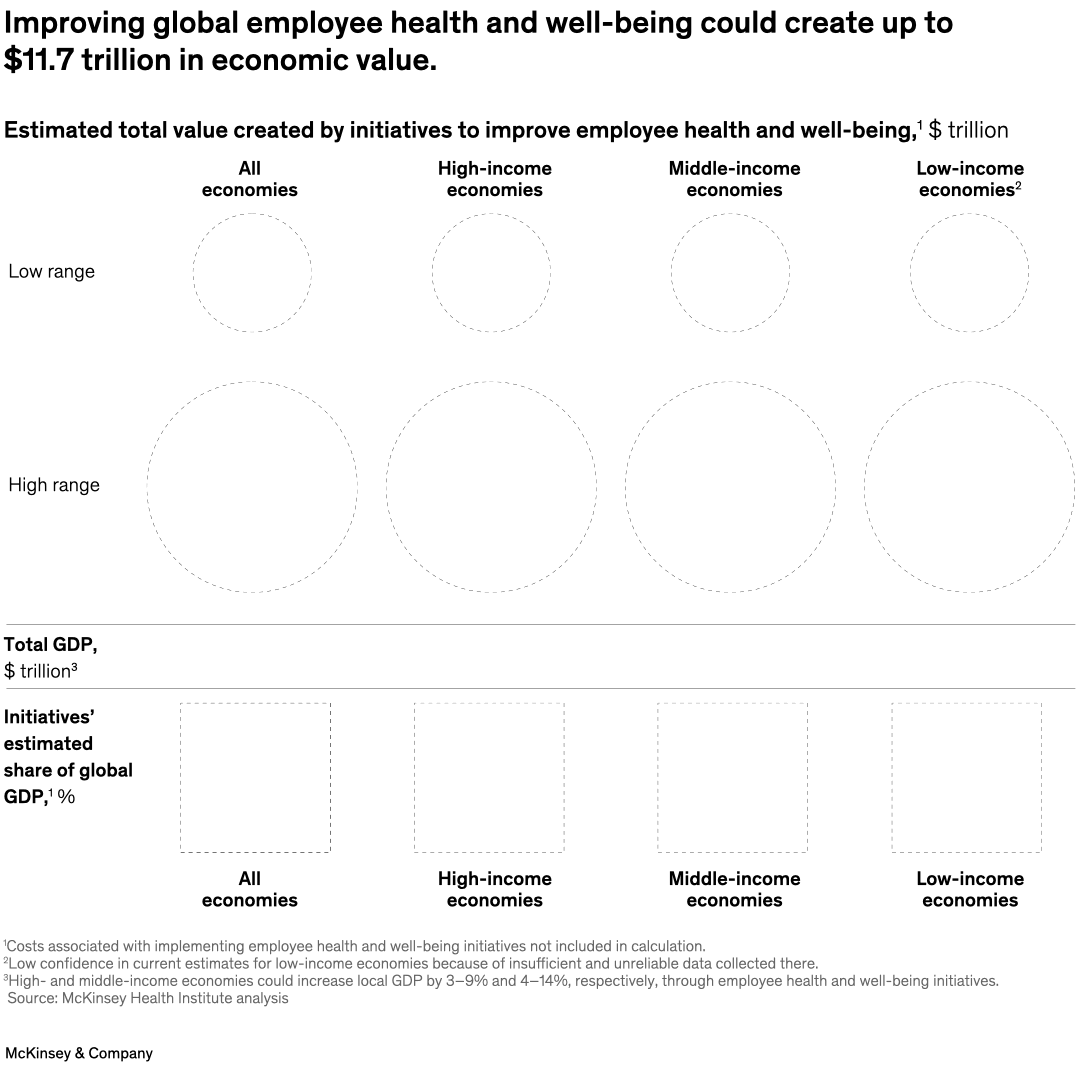There’s a potential payoff from happier, healthier employees. According to senior partner Patrick Simon and colleagues, improving employee health and well-being could create $3.7 trillion to $11.7 trillion in economic value—the equivalent of raising global GDP by 4 to 12 percent. Employers could look to six key areas for boosting employee health: social interaction, mindsets and beliefs, productive activity, stress, economic security, and sleep.

Image description:
Comparable area circles show the ranges of estimated total value impact of initiatives to improve employee health and well-being on different economies. The range for high-income economies is between $1.8 trillion and $5.7 trillion, the range for middle-income economies is between $1.7 trillion and $5.4 trillion, and the range for low-income economies is between $0.2 trillion and $0.6 trillion. The combined impact range for all economies is between $3.7 trillion and $11.7 trillion. The impact calculations don’t include the costs associated with implementing the initiatives. Insufficient and unreliable data collected in low-income economies lead to low confidence in the estimates for that group.
Secondary graphs show the ranges of estimated shares of global GDP created by the initiatives for different economies. The estimates are a 2% to 6% share for high-income economies and a 2% to 5% share for middle-income economies. The estimate for all economies is 4% to 12%. There are insufficient data to generate an estimate for low-income economies. High- and middle-income economies could increase local GDP by 3% to 9% and 4% to 14%, respectively, by implementing the initiatives.
Source: McKinsey Health Institute analysis.
End of image description.
To read the article, see “Working nine to thrive,” March 13, 2024.